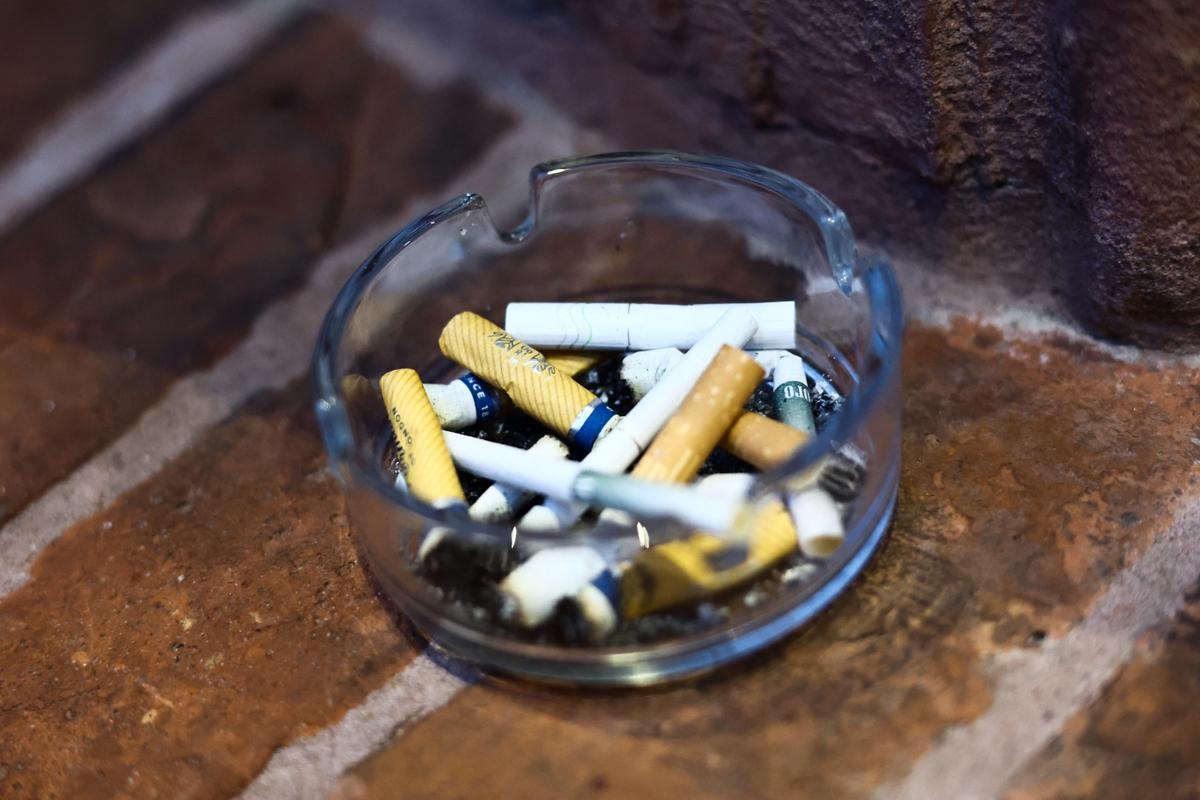Smoking in France: Covid-related increase erased, but social inequalities persist

Summary: Smoking is "significantly down compared to 2021" in France, according to the initial results of the 2024 barometer from Public Health France. A vast survey that guides public policies to combat smoking.
By The New Obs with AFP

One in four people aged 18 to 75 reported smoking tobacco in France in 2024. JAKUB PORZYCKI / NURPHOTO VIA AFP
One in four people aged 18 to 75 reported smoking tobacco in 2024 in France: the population has returned to its pre-Covid smoking level but social inequalities remain very marked, according to Public Health France .
While tobacco remains the leading cause of preventable death in the country – it kills 75,000 people per year, which represents 13% of deaths – smoking is "significantly down compared to 2021" , the health agency welcomes in view of the first results of its 2024 barometer published this Wednesday, October 15, as the No Tobacco Month approaches, which will take place from November 1 to 30.
Manufactured or roll-your-own cigarettes, cigars, cigarillos, shisha pipes: 25% of 18- to 75-year-olds reported smoking last year in mainland France, 18% of whom smoked daily. In 2021, the figure was 32%, or nearly one in three people, according to this extensive survey, which guides public policies to combat smoking.
Achieving the “goal of a next generation without tobacco”In 2024, the proportion of smokers will fall to 24% (including 17.4% daily) including seniors aged 76-79 and overseas departments and territories (except Mayotte), SpF having broadened the scope of its survey.
If we take this last figure, smoking returns to its 2019 level: it had fallen to 24% compared to 29.4% in 2016, a drop of unprecedented magnitude. Then the health, social, and economic crisis caused by the Covid-19 pandemic caused a pause, or even a rise in smoking among the working classes, before beginning to decline again.
Also read

Interview: "In addiction, there is a simple principle: to help someone move forward, we use gratification, not punishment."
Thus, "the downward trend observed since 2016, linked to the implementation of national plans to combat smoking" (plain packaging, price increases, reimbursement of cessation aids, tobacco-free months, etc.) and "interrupted during the Covid-19 pandemic period, is re-establishing itself," welcomes SpF.
Welcoming this "excellent news" , Professor Yves Martinet, president of the CNCT (National Committee against Smoking) called in a press release for continued efforts to achieve "the objective of a next generation without tobacco" .
Strong social inequalitiesHowever, social inequalities in smoking remain very strong: daily smokers are twice as numerous among manual workers (25.1%) as among executives (11.8%). In addition, 13% of those with a diploma above the baccalaureate level smoke daily, compared to 20.9% of those without a diploma or with a diploma below the baccalaureate level, and up to 30% of people "perceiving their financial situation as difficult" . These "strong social inequalities in consumption (...) call for " strengthening (the) actions" of SpF, declared its general director Caroline Semaille to the press.
In 2024, smoking also remains more common among men than women, regardless of age group: it affected 26.8% of men aged 18 to 79, compared to 21.5% of women, including 19.7% and 15.3% of daily smokers respectively.
Also read

Decryption Why it's so hard to quit smoking the second time





